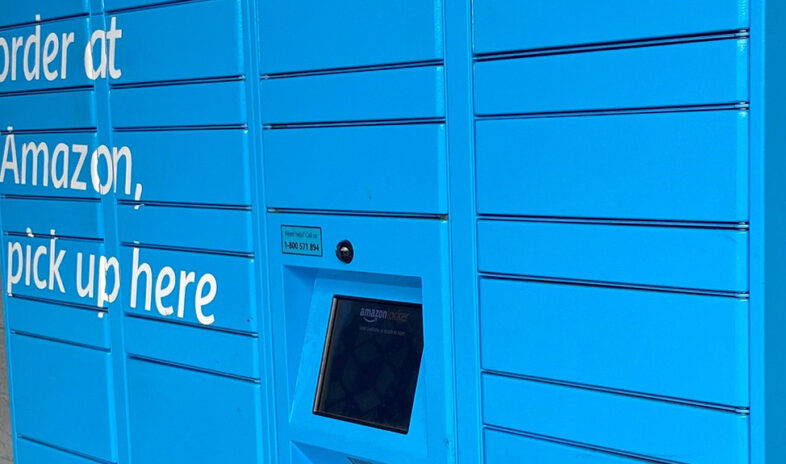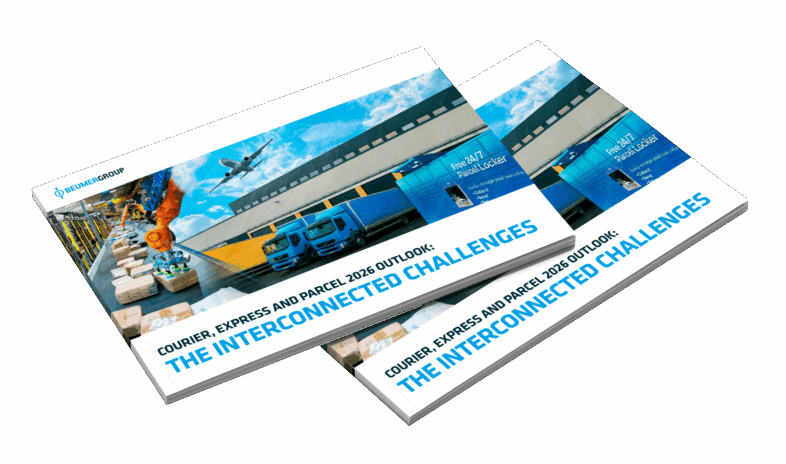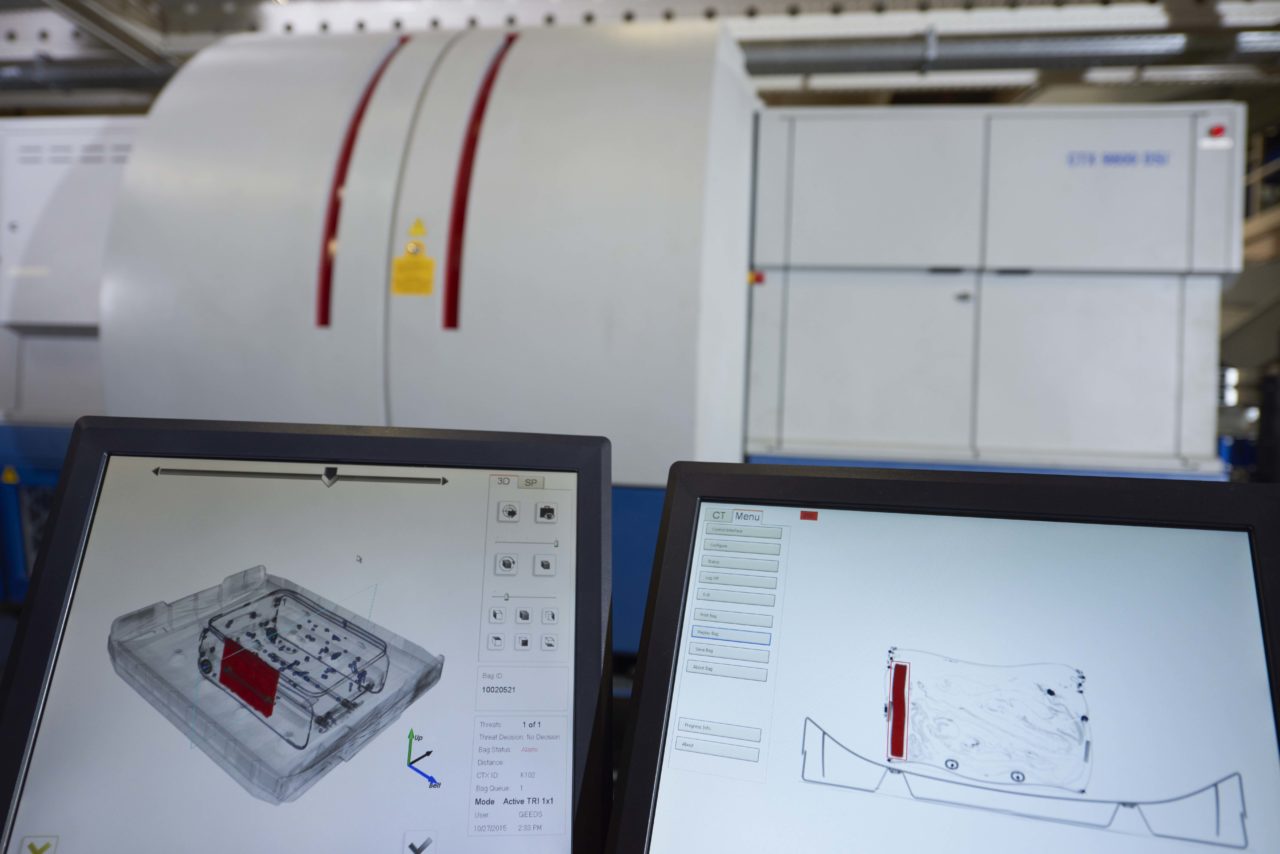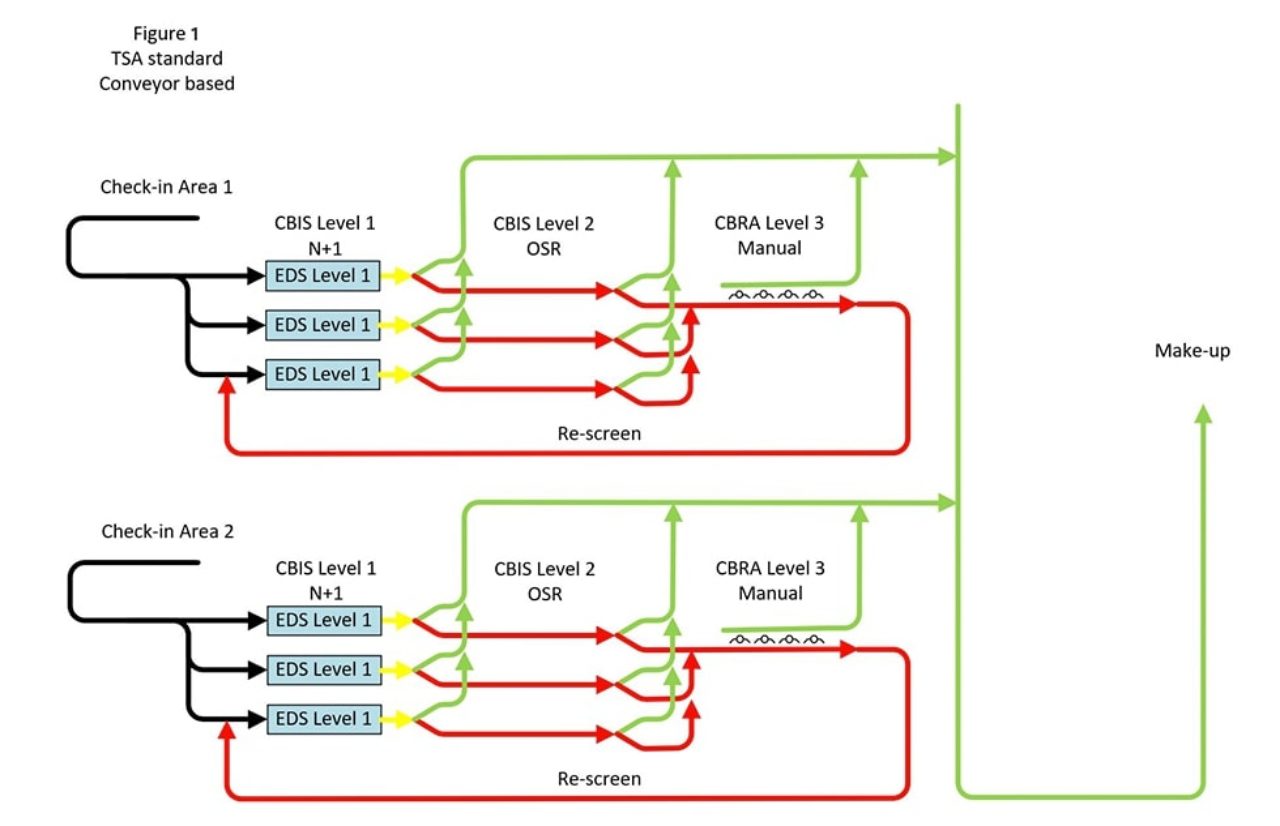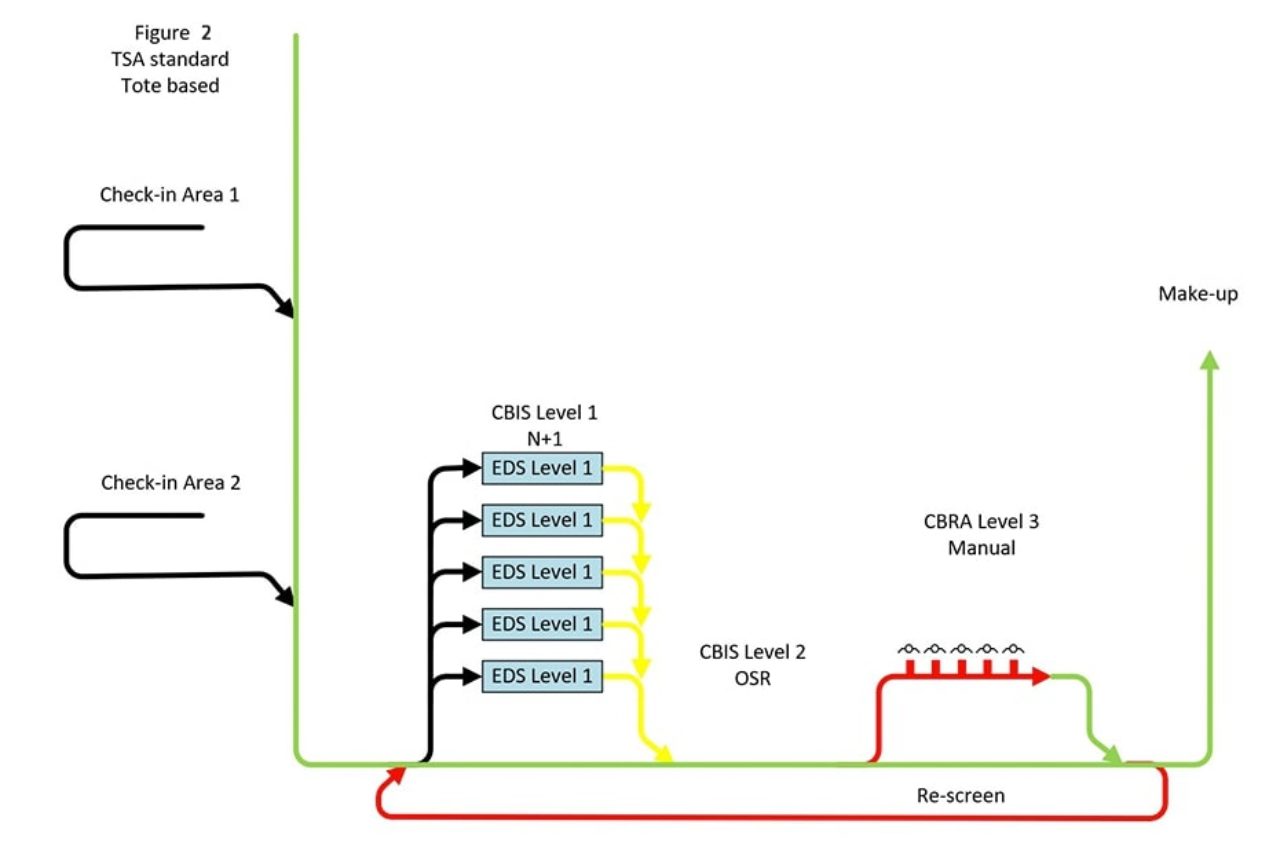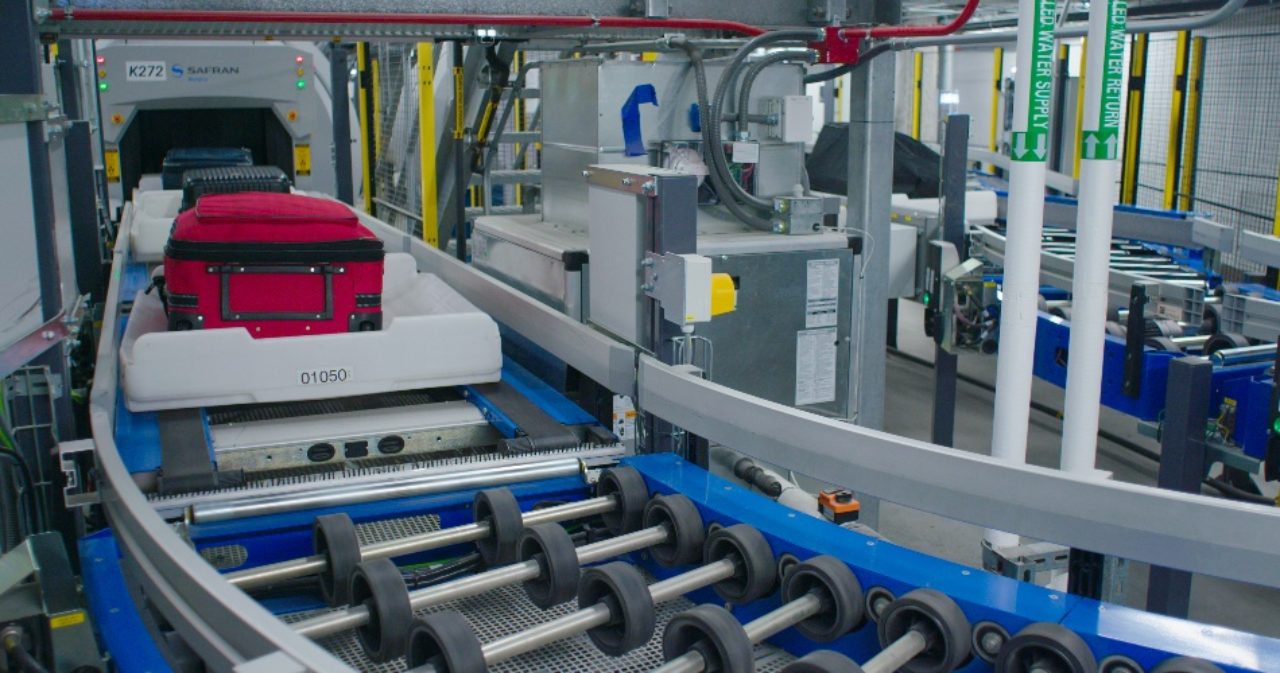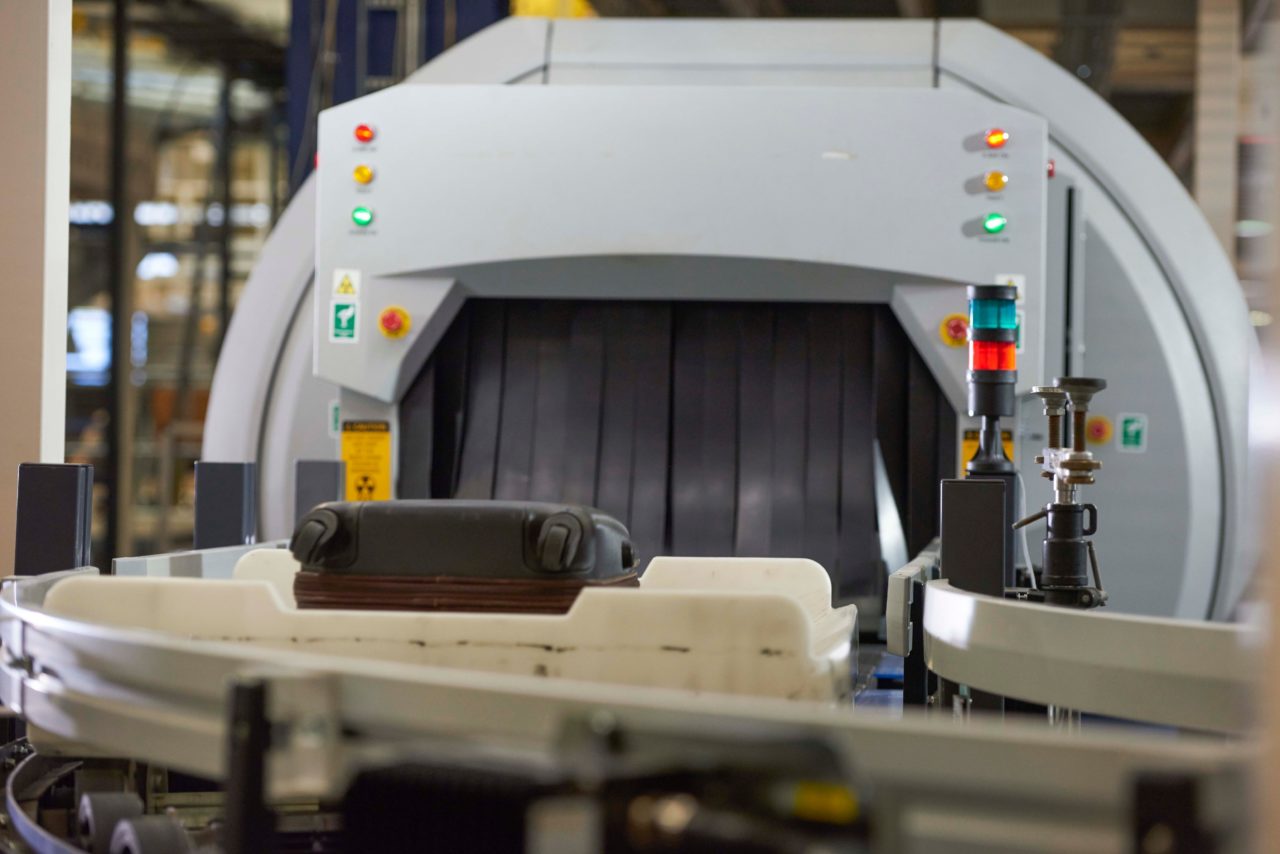Figure 1 shows a traditional conveyor-based system with two check-in areas, two CBIS and CBRA areas and a shared sortation system. The resistance towards mixing alarmed bags “without decision” with approved bags due to safety reasons makes a traditional conveyor system more complex than a tote-based screening matrix.
Figure 2 shows a typical tote-based system with the same functionality as shown in Figure 1; two check-in areas and a shared sortation system, but now with a shared CBIS and CBRA area. The shared CBIS and CBRA area means the system can be optimised in terms of using the screening machines and the manning of the CBRA area. Also, the possibility in the tote-based system to mix alarmed bags “without decision” and approved bags simplifies the CBIS and CBRA operations significantly.
The TSA has also implemented cart-based ICS technology, controlled by bluetooth, for its screening system at Denver International Airport.
ICS forms a part of TSA’s Planning Guidelines and Design Standards 2020
As a result of the approval, the TSA’s current Planning Guidelines and Design Standards for Checked Baggage Inspection Systems of August 2020 include ICS as an alternative type of baggage system to the traditional “friction belt on slider bed” baggage conveyance technology, that utilises other means to accomplish the same goals.
At section 3.5.1, the guidelines explain:
“In this type of system, the bag remains on the carrier throughout the screening and sortation processes. Alarmed baggage is transported to the CBRA on the carrier while cleared baggage is conveyed to the sortation system …”
They also clarify what the TSA requires of ICS:
“… once loaded onto the ICS carrier, the bag must remain associated with that carrier throughout the screening process. Upon arrival into the CBRA, the bag cannot be removed from the carrier until an operator is available to screen the bag. Once the bag is removed from the carrier by sliding the bag (lifting should not be required), the carrier must remain at that location until the bag has been screened and loaded back onto the same carrier to maintain positive tracking. Depending on the CBRA design, bags may remain in the carrier during the physical inspection process.”
The CBRA solution described in the guidelines is, in fact, the solution now in operation at San Francisco’s Harvey Milk Terminal.
The guidelines note that the TSA is presenting the ICS concept to provide planners with a broad range of potential CBIS concepts for consideration during the pre-design phase.
The certification applies to US airports and for US pre-border clearance, making migration to a common-use model more attractive.
ICS-based screening is implemented in the USA
Since receiving TSA approval, ICS-based baggage screening has been installed at Orlando, Los Angeles, San Francisco and Denver International Airports. Its implementation has brought significant benefits:


